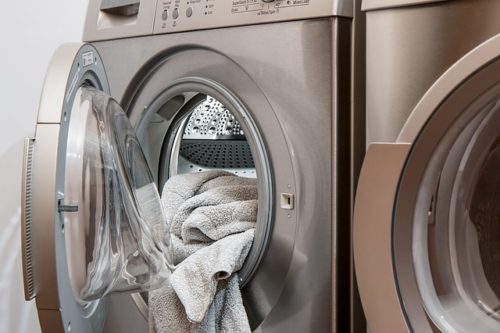Washing machines and dryers have gotten really fancy (and quite pricey) in the last few years, and shopping for your perfect ones can be overwhelming. In this guide, we will help you select the ideal washing machine as per your requirements.
What Kind Of Washing Machine Is Better?
The first thing you need to decide is whether you want a front-loading or top-loading machine. Some tests show both types clean really well, you’ll likely not notice a difference in your clothing, though some tests show front loaders is a slight bit better at the job. The one you should buy depends on your personal preference.
Front-Loading Washing Machines
A front-loading washing machine is the most energy-efficient choice. It uses the least quantity of water in each cycle. Clothes get washed when they rotate in a small amount of water that’s added by the machine once it determines the weight and type of load. Front-loaders can handle significant, bulky things, such as sleeping bags and comforters, but do require the person to bend down or squat down to load and unload the tub. Most manufacturers sell pedestal drawers to elevate the appliances up to off the ground and save a little strain on your back.
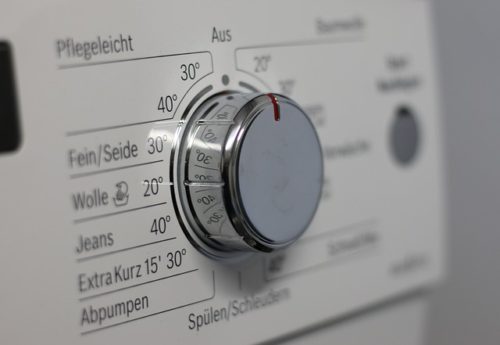
If space is tight, the front load washer can be placed with its comparable dryer on top and stored in a closet, bathroom, or any small area where electrical connections, water, and venting are available. Remember that water usually puddles in the dispensers, door gasket, and even the drum itself at the end of the cycle and can cause mold growth and odors. If you pick a front loader, you will have to be diligent about cleaning dispenser and the gasket and leaving the door ajar so the drum dries out and moldy odors don’t develop.
Top-Loading Washing Machines
A top-loading washing machine is a fantastic choice if you like a more conventional configuration, and they’re typically the cheapest. High-efficiency, newer models offer excellent cleaning, have big tubs for extra-large loads, and are yet energy-efficient, although they need more water than front loaders. They are available with or without middle agitators, which draw on clothes through the water to wash them. Note that agitator models are a little gentle on fabrics and get clothing cleaned by moving and bouncing them through a pool of water.
Since the water in top-loaders drains down and out, they are less likely to come up with mold and smells than front-loaders are, and that is the main reason they are preferred by customers. Like with all machines, it is a fantastic idea to clean tub and dispensers about once per month.
Save Money When Purchasing New Washing Machines
- Consider purchasing white. Designer colors and platinum, graphite are nice but can cost you an additional $100 or more.
- Shop During holiday sales. All electrical appliances, including washing machines, usually go on sale around vacations and always on Black Friday.
- Choose a basic model. Cycles and features, like steam and Wi-Fi connectivity, are nice to have but are not necessary if you’re on a budget. Mid-range models often clean as well as top-of-the-line ones, but without the frills.
Best Washing Machines Of 2019 Review
1. SAMSUNG – FlexWash Washing Machine
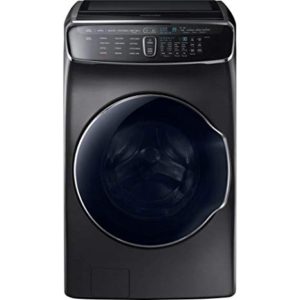
This double-duty machine provides flexibility with two individually controlled washers in the single unit. The bottom is made for extra-large loads and contains a super-cleaning cycle feature, including steam and sanitizing settings. You have the ability to add up to five rinses onto a cycle to eliminate every piece of detergent out of larger items such as a bulky down comforter or coat.
The smaller upper washer is created for delicates to items prone to bleeding, or single items like that dirty blouse you wish to wear today. In past testing, we discovered that Samsung washers present great washing and fabric care performance.
Load Capacity: 6.0 cubic feet
2. GE – High-Efficiency Top Load Washing Machine
In our evaluations, GE’s washing abilities rival more expensive machines. This timeless top-loader having an agitator is super-straightforward to use. We are excited that at this price, it provides options like a deep fill, up to two-hour automatic presoak, and rinse for more customized water levels, has an outstanding capacity, and is Energy Star Qualified.
Load Capacity: 4.2 cubic feet
3. MAYTAG- High-Efficiency Top Load Washing Machine
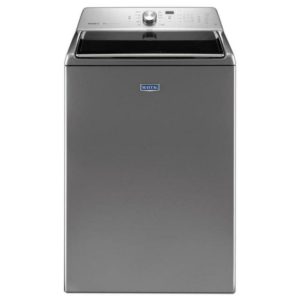
This washer has a fabulous center agitator but is still so huge inside you will never notice any compromise in capacity. While it’s effective and energy-saving, it is possible to add more water if you would like to with the Deep Fill option. It is a cinch to use since the control panel is easy to decode, clear, and responsive to the touch.
The PowerWash cycle promotes cleaning for additional dirty loads, and RapidWash trims wash time to under thirty minutes for things you need in a hurry. A coat which we washed on the bedding cycle came out rinsed clean, and free.
Load Capacity: 5.3 cubic feet
4. MIELE- TwinDos Washing Machine
This mighty mini is a great deal for a good reason: Its deceptively spacious interior and space-saving exterior makes it the ideal option to install in tiny houses, apartments, or as second-floor laundry in a closet or bathroom.
Most different is its TwinDos system that automatically distributes the correct quantity of detergent and enhancer for top cleaning of colored or white clothes. There are a lot of individual cycles to pick from, such as QuickIntenseWash can whitening cotton test swatches and impressively lifted tough spots in under one hour.
Load Capacity: 2.26 cubic feet
5. LG-TWINWash Method with LG Sidekick
Having a huge-capacity washing machine with a 1.0 cu. Ft. pedestal washer, there is no load this large combo unit cannot handle, and it is super easy to load. Use the top washer for your every day and oversized loads and the mini one below for just a few items that require special care or that you need in a hurry.
Includes steam, works with Amazon Alexa, Google Assistant, or an app on your phone and is approved by the Asthma and Allergy Foundation of America to remove and sanitize sniffle-causing allergens from clothes. While the pedestal washer is fantastic for delicates, we found the top machine gentle on fabrics, also. Note that you have to buy the pedestal washer separately.
Load Capacity: 5.2 cubic feet (top), 1 cubic foot (bottom)
6. ELECTROLUX-Front Load Washer with SmartBoost Technology
Now, never again will you have to bother about detergent staining your clothes or laundry pods, which will not dissolve: This washer works by pre-mixing detergent before dispensing it in the machine. It also contains a dispenser drawer that holds single-dose detergent packs rather than tossing it in the drum. With this machine, no matter what type of detergent you use, it’s already dissolved by the time it touches your clothes to clean fast and thoroughly.
We discovered it left little water in the load, so it spent less time in the dryer and provided good cleaning results even on the quickest cycle.
Load Capacity: 4.4 cubic feet
7. SAMSUNG-High-Efficiency Front-Load Washer
The most advanced feature of the Samsung AddWash is the small door on top that allows you to add a t-shirt or stray sock after the machine starts. The feature eliminates the issue of dirty water drips that occur when you open the central door mid-cycle. With a quick wash cycle that cleans clothes in around 35 minutes, this machine is perfect for busy families with lots of laundries to handle.
Load Capacity: 4.5 cubic feet
8. LG- Front Controller Top Load Washer with TurboWash
Buttons usually get banished to the rear panel on top loaders, but they are center and front on this model. This is a clever design for the shorter people among us thanks to some smaller, folding lid, which does not require you to stretch to close it. Additionally, it aced our cleaning tests on the regular cycle, and its normal and quick cycles were the speediest of the ones we evaluated.
Load Capacity: 5.0 cubic feet
Right Way To Do Laundry
Do you still wash your all linen in hot water? Well, stop using it. According to the Department of Energy, “washing machines do not need a minimum temperature for optimal cleaning. To decrease energy costs, you can use either warm or cold water for laundry loads. Coldwater is obviously enough for rinsing.”
And do not worry about the detergent–it will work fine in cold water. The wash temperature has dropped from roughly 100 °F to approximately 80 °F over the last decade. This means that washing machine makers are creating the “normal” setting on washers to wash at lower and lower temperatures
Also, there are some detergents specifically made to run in cold water, such as Tide for Coldwater and Biokleen Cold Water.
But frankly, water does do a better job of getting your garments clean. As in almost any chemical reaction, turning up the heat makes the reaction go faster. For that reason, it’s more likely to go to completion. You might think about running some loads on hot. As we heard from our testing, hot water eliminates odors better.
However, a word about hot: It is also more likely to wear out your clothes faster, as the fibers can break down better. So if keeping your particular dress in good condition is your target, wash it in the cold.
Also, there are certain things that you should never wash in hot water. Clothes containing dyes that run should be washed in cold water. Fabric dyes are more prone to dissolve in hot water, making them run out of your favorite sweatshirt and on your tighty-whities. Also, blood stains will only get baked into the fabric if you run them through the hot cycle. For these, pre-treat with liquid detergent or a spot remover pen, then run them through the cold cycle. Usually, you should pre-treat stains before running them in the wash.
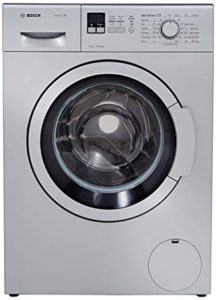
Also, the density of fabric matters. Eight Pounds of T-shirts is a bigger deal than 8 pounds of jeans because jeans have a denser fabric, English said. However, it requires more detergent to clean thicker fabrics, which is why the weight is essential. And how much detergent you use is necessary.
Too much, and it might not rinse out and cause irritation, and sometimes a mildewy smell.
With too little detergent, your clothes may not get clean. So use the dosing instructions on the detergent bottle, but remember that their idea of abnormal” load may differ from yours. To ensure, measure your clothes on a bathroom scale.
And how much detergent should you use? That depends. Did you have a food fight in these clothes? Then lots. Can you go to your non-sweat–inducing desk job? Then use a small amount. But be sure you take a look at this cap or scoop that came with the detergent. Though they may be tough to see, you will find lines there. Be sure that you fill to the appropriate line, be it heavy, normal, or light. Don’t just fill out the cap all the way up unless you are confident you need that much. More detergent doesn’t necessarily imply more clean, it only means more money.
It also matters how full you pack your washer. If you really cram a huge amount of clothes in there, they won’t have space to agitate freely. This indicates that the detergent can’t seep into all the clothes and that they won’t wash thoroughly either. Loosely place your clothes in the washer, and don’t fill it all the way to the top.

